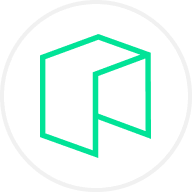GAS price
in EURAbout GAS
Disclaimer
OKX does not provide investment or asset recommendations. You should carefully consider whether trading or holding digital assets is suitable for you in light of your financial condition. Please consult your legal/tax/investment professional for questions about your specific circumstances. For further details, please refer to our Terms of Use and Risk Warning. By using the third-party website ("TPW"), you accept that any use of the TPW will be subject to and governed by the terms of the TPW. Unless expressly stated in writing, OKX and its affiliates (“OKX”) are not in any way associated with the owner or operator of the TPW. You agree that OKX is not responsible or liable for any loss, damage and any other consequences arising from your use of the TPW. Please be aware that using a TPW may result in a loss or diminution of your assets. Product may not be available in all jurisdictions.
GAS’s price performance
Guides

GAS on OKX Learn
GAS FAQ
GAS is the token that powers the Neo blockchain, allowing users to create and launch numerous applications on the network.
Holding GAS grants users access to the Neo blockchain, allowing them to build and deploy various decentralized applications (DApps), execute smart contracts, and earn GAS as a reward for actively participating in the Neo network.
You can buy GAS from OKX exchange which offers GAS/USDT trading pairs.
Before you begin trading with OKX, you need to create an account. Then, to trade GAS/USDT, GAS/BTC, or GAS/ETH, click "Basic trading" under "Trade" on the top navigation bar.
If you do not have USDT, BTC or ETH, you may buy USDT, BTC or ETH with your preferred fiat before swapping it for GAS in the trading terminal.
Alternatively, visit our new OKX Crypto Calculator. Select GAS and the desired fiat that you would like to convert to view the estimated live conversion price.
Dive deeper into GAS
The dual token model has seen significant adoption, offering numerous advantages, such as addressing regulatory compliance concerns and expanding token functionality. GAS operates within a dual-token framework, which enhances its capabilities and usage within the ecosystem.
What is GAS?
GAS is a digital asset for accessing the NEO network, a China-based project that seeks to play a leading role in the emerging digital economy. With GAS, users can interact with the NEO blockchain, enabling them to develop and deploy various decentralized applications (DApps).
When transactions are processed on the blockchain, nodes validate and add new blocks, earning rewards through transaction fees paid in GAS. Furthermore, GAS is also utilized as a means of payment for executing smart contracts on the NEO platform.
The GAS team
The GAS project was initiated by Da Hongfei and ZhengWen Zhang as part of the broader NEO blockchain in 2014. The team comprises experienced professionals in the blockchain, cryptocurrency, and financial sectors.
GAS has garnered support from reputable venture capital firms, including 7 Star Capital, Block Ventures, BetterVerse DAO, Fork Ventures, and Evangelion Capital, further validating its potential and attracting investment from key players in the industry.
How does GAS work?
Early blockchain-based projects like Bitcoin (BTC) focused on facilitating cross-border payments seamlessly. GAS operates within the Neo ecosystem, which aims to go beyond facilitating cross-border payments and transform blockchain into a comprehensive system. NEO and Ethereum (ETH) introduced the concept of smart contracts and advanced tools to empower blockchains in creating new digital assets, securing digital identities, and eliminating intermediaries.
GAS serves multiple functions within the NEO network. Firstly, it allows prospective users to pay for network usage and other activities within the ecosystem. Additionally, GAS serves as the network's reward token, incentivizing participants. Lastly, GAS powers Neo by enabling developers to build and launch DApps and execute smart contracts, enhancing the functionality and versatility of the platform.
GAS utility token
GAS is the utility token of the NEO network, serving as the fuel for the blockchain and enabling users to create and launch DApps and smart contracts. It also functions as a reward token, allowing NEO holders to earn passive income by staking a portion of their holdings for a specified duration.
GAS tokenomics
GAS has no maximum supply limit, but the team plans to generate 100 million GAS tokens using an advanced algorithm to complement the 100 million NEO supply. Currently, over 13.9 million GAS tokens are in circulation, providing users with access to NEO.
Approximately 10 million GAS tokens are released yearly as rewards for adding new blocks to the blockchain.
How to stake GAS
How to stake GAS GAS cannot be staked. However, NEO holders can earn GAS by committing a portion of their tokens to the network. To begin, go to the Neo website, click on the governance option, connect your wallet, choose an amount to be locked, and complete the process. Once successful, you can potentially start earning GAS. However, the rewards are proportional to the selected amount and duration.
GAS use cases
GAS enables developers to publish on the Neo blockchain, supporting smart contract execution and serving as a reward for holding and staking NEO. It also functions as a daily block reward, with the team minting and releasing five GAS tokens daily.
GAS token distribution
GAS token distribution Like Bitcoin and other Proof of Work (PoW) coins, all GAS tokens are generated through block generation. Initially, the block reward was 8 GAS per year, gradually decreasing by 1 GAS annually. This reduction continues until the final GAS token is awarded as a block reward, estimated to occur after approximately 22 years.
What lies ahead for GAS?
As an essential token of the Neo blockchain, GAS empowers the network and enables developers to create and deploy applications. The future looks promising for GAS, as the growth of Neo directly contributes to its own success.

































